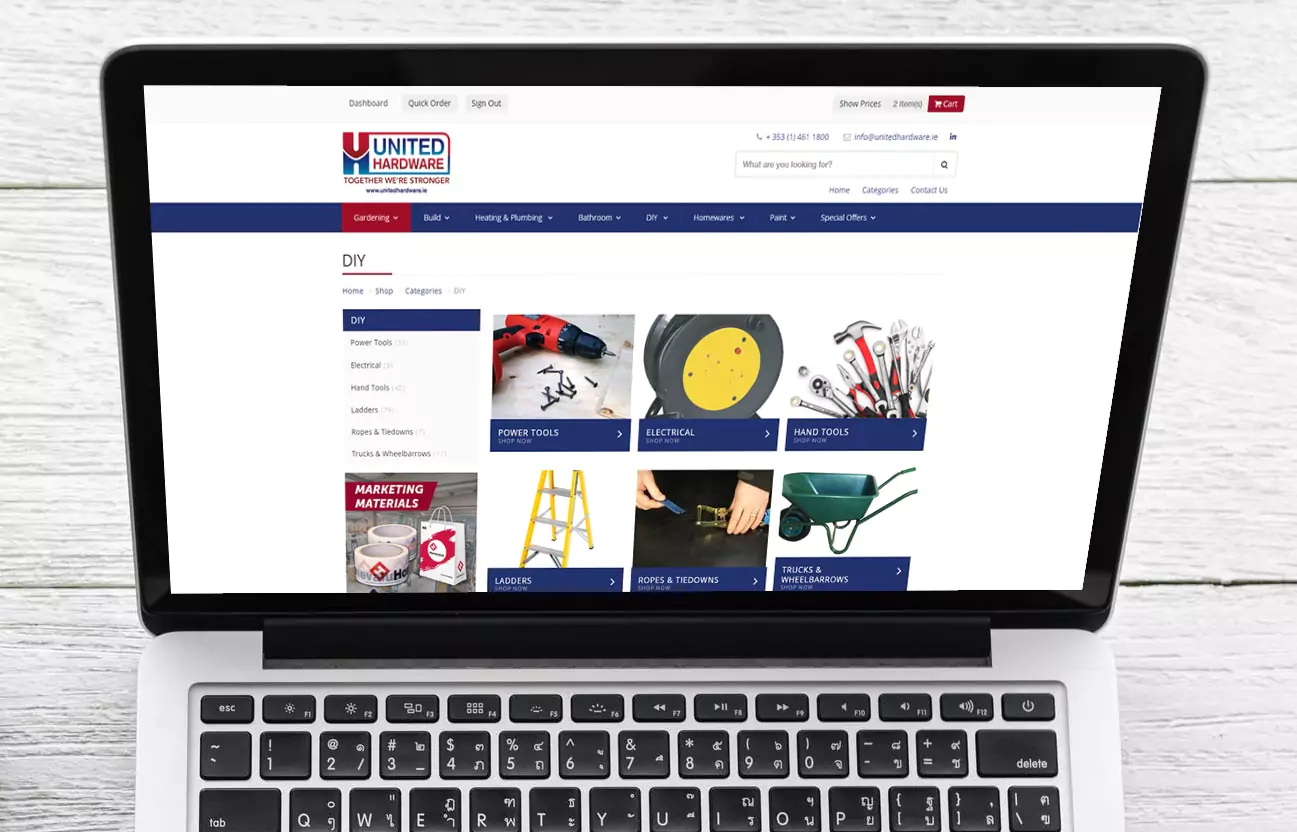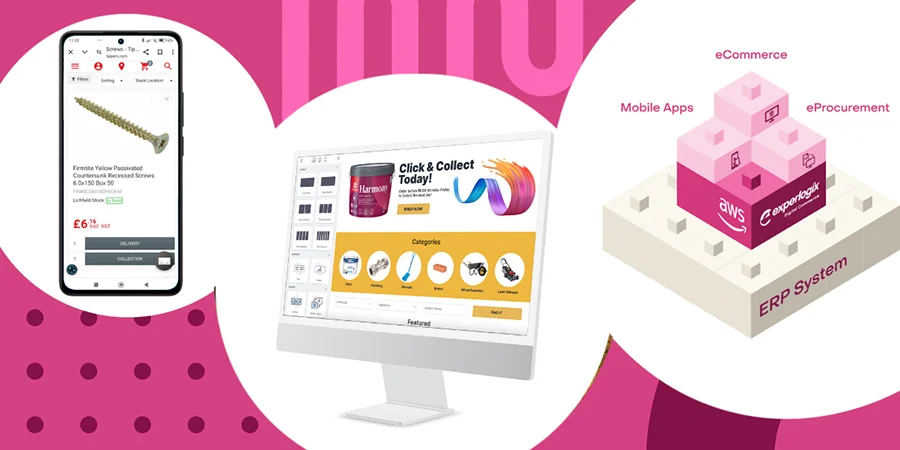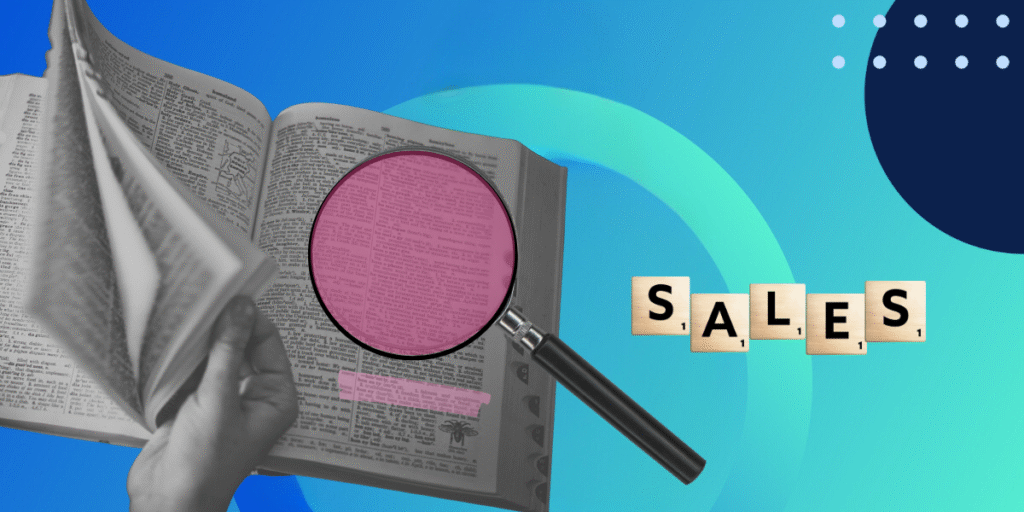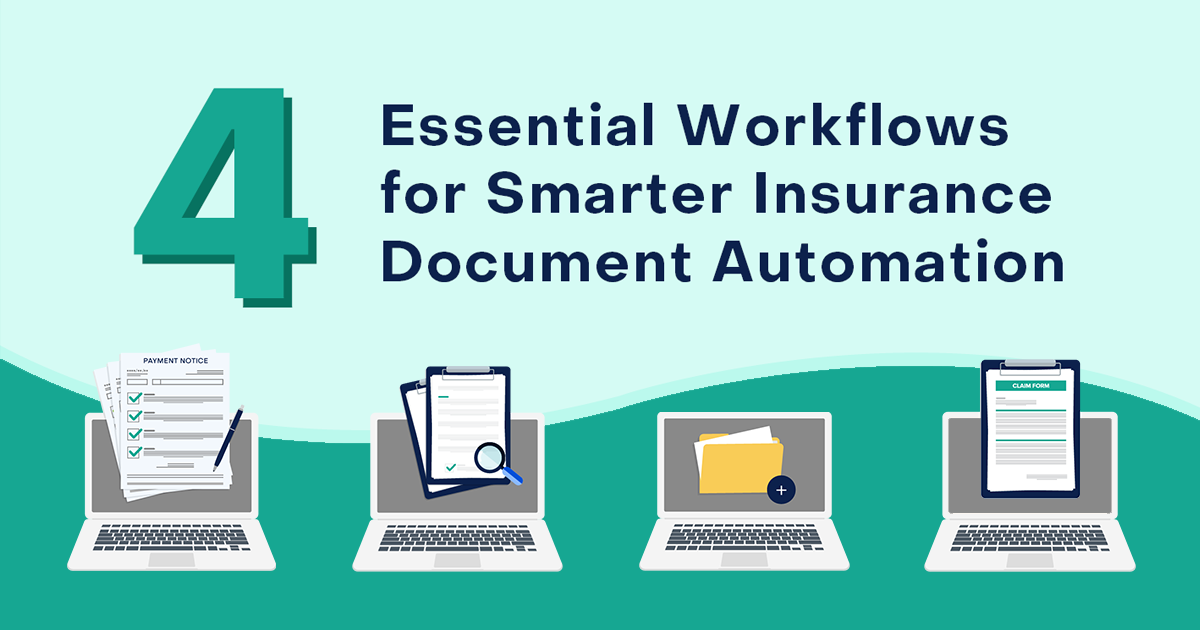Ever feel like your ecommerce system is held together with digital duct tape?
You’re not alone in this. Countless B2B companies are struggling with platforms that promise the world but deliver nothing more than headaches—mismatched pricing, inventory nightmares, and interfaces that frustrate more than they facilitate.
We spoke to Graham O’Rourke, who leads Experlogix’s innovative eCommerce product team, about what truly drives success in B2B ecommerce. He shared his insights on what businesses need to consider to meet the changing needs of today’s B2B buyers and stay competitive in 2025 and beyond.
Let’s dive right in! ⚡️
1/ So, Graham, what’s the single most important factor for success in B2B ecommerce?
“The biggest mistake in B2B ecommerce is forcing a retail platform to handle business complexities. B2B requires solutions built from the ground up.”
Success in B2B ecommerce comes down to choosing the right platform—one that’s actually built for B2B, not just adapted from B2C retail.
There’s this huge misconception where people hear big names like Magento or Shopify and think “ecommerce is ecommerce”, regardless of whether you’re selling to a business audience or a consumer audience.
But that’s not how it works in reality. The whole game is different in B2B. You’ve got completely different buying behaviors, user patterns, volumes, pricing structures, and way more demands.
What we’re seeing is a lot of projects falling flat on their face because companies are going about it backward. They’ll partner with a general agency that claims to “do ecommerce” and then try to force-fit a retail platform into a B2B model.
You then end up with a compromised system that doesn’t deliver what B2B customers actually need.
They can get the right pricing. They can’t see accurate stock levels. They can’t handle multiple stock locations. And they can’t do proper volume breaks and bulk ordering.
These companies end up paying through the nose for all these customizations, trying to patch together some kind of working solution. But at the end of the day, they’re stuck with this cobbled-together system that only “kind of works sometimes” and keeps requiring more and more fixes.
The real key to success is going with a platform that’s purpose-built for B2B from the ground up. When you’ve got a specialist B2B platform that’s been in the game for 10+ years, all those critical B2B features are already baked in. You don’t have to specify every little thing or discover what’s missing—it’s all there in the box, ready to go.
Plus (and this is crucial), when you’ve got real-time ERP integration, you can solve all those frustrating data synchronization headaches that offline platforms struggle with. You’re not just getting a prettier front-end, you’re getting a complete solution that understands and supports how B2B business works.
In Practice: Time Products (UK) Ltd didn’t guess their way to better B2B sales—they built them with Experlogix Digital Commerce. By integrating with SAP Business One, they unlocked real-time pricing, streamlined ordering, and slashed manual errors. The result? Faster transactions, happier customers, and smoother operations. This is what we mean when we say the right B2B platform does the heavy lifting.

2/ How can B2B businesses balance complex product catalogs with a simple, intuitive buying experience?
There’s a growing trend where B2B buyers expect experiences that feel more like B2C. They want clean, simple interfaces. But clean and simple doesn’t mean identical to B2C. The behaviors and needs are radically different.
In B2B, you’re dealing with repeat customers who already know they want to buy from you. They’re not some random shopper you need to capture in 30 seconds before they bounce, and they don’t need to be enticed or upsold in that typical retail way.
What they actually need is:
- Amazing search functionality
- Detailed technical specifications that are easy to read
- The right level of product detail
- Ability to handle their complex purchasing patterns
So while your B2B platform needs that user-centric design, it’s got to acknowledge that these are fast-moving consumer goods we’re talking about. Your ecommerce manager needs powerful tools to personalize journeys and create clean interfaces, but they’re serving a fundamentally different type of buyer.
The key is understanding that simplicity in B2B doesn’t mean stripping away complexity.
It means making that complexity manageable.
Your customers need all that detailed information and those complex purchasing options, but they need it presented in a way that makes their job easier, not harder.
So it really boils down to building an interface that respects who your B2B buyers are—most likely, professionals who need efficiency and detail, not consumers who need to be convinced to make a purchase in the next few minutes.
Your platform should help them get their job done with minimum friction while still giving them access to all the complex information and options they need to make informed business decisions.
3/ What are the biggest mistakes B2B companies make with their ecommerce strategy?
There are two big mistakes that keep coming up, both of which are pretty fundamental.
Firstly, B2B ecommerce managers aren’t asking themselves whether they want to “build or buy”. Instead, they jump straight to either their local agency or get drawn in by big brands, like Adobe and Shopify.
It’s easy to see why. These household names have incredible marketing power. But if you’re sitting there thinking “I’m not a software project manager, I don’t want to bring in consultants to run this whole project,” then you shouldn’t be going down the custom build route at all. You should be looking at buying a best-of-breed B2B product that’s ready to go.
The second major mistake is B2B companies seriously underestimate resource requirements, especially when it comes to content and product data.
Even when they’ve got the right B2B platform, they’re not putting enough resources into the project early enough. So, what happens is they end up scrambling to gather product information that comes in all different formats and suddenly they’re drowning in data management issues.
This is particularly problematic for companies with large catalogs.
They’re not thinking about how they’re going to get all that critical info their buyers need actually onto the site. Sure, if they’ve got a Product Information Management (PIM) system already, that makes things easier—but most don’t.
The companies that are doing things differently:
- Recognize early on whether they need a build or buy solution
- Put the right resources in place from the start
- Understand that no third party can make sense of their specific B2B wholesale data – it’s too particular to their brands and product lines
- Make sure they’ve got the right people and know exactly how many days they need to invest on their side
Key Takeaways:
- Choosing the right platform is critical: A B2B platform needs to be purpose-built, not adapted from B2C.
- Real-time ERP integration solves data synchronization issues: No more mismatched pricing or inventory errors.
- Simplicity doesn’t mean stripping away complexity: A good B2B ecommerce experience balances detailed product information with an easy-to-use interface.
4/ How should B2B companies approach personalization to drive better engagement and sales?
Personalization starts with understanding where your truth lives—and, in B2B, that’s your ERP system.
When we say “personalization” here, we’re not talking about showing different banners to different people. We’re talking about deep, structural personalization that reflects real business relationships.
There’s a lot of nuance to it.
You’ve got customer groups with different discount structures, and individual pricing per product per customer—you can’t just export this stuff to another platform. You’re looking at millions, if not billions, of combinations.
That’s why real-time integration is absolutely crucial if you want to deliver any kind of meaningful personalization.
And when you really get into the weeds, you can get incredibly granular. This might look like:
- Real-time credit limits and balances
- Exact, customer-specific pricing for every single product
- All their specific discounts pulled straight from the ERP
- Stock availability or even delivered-to-promise dates for the next shipments
- Tailored catalog access (some customers might not even see certain parts of your catalog)
But then you can layer on top of this with more traditional personalization tools. You can add customer-specific messaging when people log in, share group-specific offers, launch new products to different business types, and customize messaging throughout the journey.
This is often more straightforward if you integrate it with a specialized marketing tool. But regardless of what tools are in your stack, you’ve got to get that foundational, ERP-driven personalization right first because, in B2B, personalization is so much more than marketing. It’s about showing each customer their actual, negotiated business relationship with you in real-time.
In Practice: Sam Smith, Sales and Marketing Director at Klipspringer, lays it out: “Klipspringer’s partnership with Experlogix Digital Commerce has resulted in 20-30% growth, a 350% increase in value, and a 300% increase in volume.” The right B2B platform combined with seamless ERP integration is the tipping point. When your eCommerce platform stops fighting your ERP and actually works with it, efficiency, scale, and the revenue growth you’ve been chasing can finally happen.
5/ How does integrating an ecommerce platform with legacy systems (CRMs or ERPs) impact scalability and customer experience?
A good B2B ecommerce integration can actually extend the life of your legacy ERP system.
It’s not easy to just rip out and replace older-generation systems with tentacles deep in your business operations. But when you’ve got the right ecommerce platform that really understands B2B and how ERPs work, you can do things like add a modern customer portal, add new ordering mechanisms (like punch-out ordering), and open up new channels without touching the core system.
It gets even more interesting when we talk about customer experience.
The integration completely transforms how your customers interact with you.
First, it removes friction—and, in B2B, friction kills adoption.
Here’s how it works:
- Customers instantly see their exact, negotiated prices, so they’re not left wondering what price they’re actually going to get
- They get real-time stock information, which is crucial because these aren’t discretionary purchases. In B2B, if a customer needs parts for automotive work, for example, it’s mission-critical. If you can’t show them accurate stock levels, they’ll buy from someone else
- They can see which warehouse has their items and get accurate lead times
- They can even set their own delivery dates
Then you’ve got all these specialist tools that make life easier for B2B buyers:
- Quick order facilities, or the digital equivalent of an order book where buyers can rapidly input part numbers and quantities
- Spreadsheet uploads for replenishment orders ( the customer’s system generates what they need, they just upload it)
- Real-time order history across ALL channels—not just web orders, but everything: phone, punch-out, sales rep orders, the lot
- Simple reorder functionality that automatically rechecks stock levels
Plus, this integration allows for better scalability.
When you’re working with modern ERPs like Microsoft Dynamics 365 or SAP’s cloud-based systems, you’re getting a perfect fit because these platforms are partners who understand each other’s ecosystems. Their roadmaps align, so as they move into areas like AI, your ecommerce platform moves with them.
The important thing to understand is that when you’re running this as SaaS, you’re continuously getting new value added. It’s not like the old days when you built it once and then needed a developer everytime you wanted to add something.
You’re constantly evolving and improving the customer experience without touching the underlying legacy system.
In Practice: United Hardware transformed their B2B ecommerce experience with our Digital Commerce solution. As they noted, “Experlogix Digital Commerce stands out not only for their state-of-the-art platform but also for their ability to solve complex issues, making them a true business partner.” By integrating with SAP Business One, they launched the ‘United Toolbox’ portal, enabling real-time inventory, self-service tools, and efficient operations—resulting in a 20% increase in online orders.

6/ What trends in digital commerce can B2B businesses no longer afford to ignore in 2025?
1. Multichannel Ecommerce is Evolving—But Not How You Might Expect
In B2B, multichannel ecommerce is about two things:
Firstly, you’ve got traditional channels with a modern twist:
This includes things like customer portals and B2B ecommerce platforms. But it’s also given rise to specific tools like:
- Mobile apps like Pocket Shop for specific use cases—think about people on the shop floor scanning and ordering all day, or mobile customers who want to order via the app and pick up at the depot the next morning
- Punch-out ordering—for some businesses, this isn’t optional. If you can’t support punch-out, you can’t even get through the door with customers who need it as part of the tendering process
Then, we’ve also started to see more emerging channels, like Amazon, Google Merchant Center feeds, B2B to B2C models, and tiered webshop ecosystems.
2. PIM systems are becoming mainstream now
The second major trend is PIM systems. This is becoming mainstream now, especially for businesses with large inventories and catalogs.
They’re finding the ERP alone just isn’t cutting it anymore.
You’ve got two options here:
- Using your eCommerce platform as a light PIM to manage and disperse digital product information
- Going with dedicated PIM solutions (like Perfion) that integrate with your existing systems
3. And then, of course, there’s AI
Everyone’s talking about it, but here’s where it’s actually making a difference in B2B:
- Productivity improvements for managing massive product catalogs
- Using OpenAI to generate product titles and descriptions at scale
- Creating different length descriptions for SEO strategies
- AI customer service agents to help merchants understand and use the software better
- Future potential for recommendation engines and upsell opportunities
The important thing to understand is that simply adopting these trends isn’t enough. You need to consider how they work together to solve real business problems. For example, these technologies work together to increase adoption within your current customer base or service a segment of the market differently (e.g. moving them from field sales rep to online).
The businesses that will win in 2025 and beyond are the ones that understand these aren’t just separate trends. You can’t just pick one and ignore the others anymore. You need a complete digital ecosystem that can handle everything from product information management to multichannel sales to AI-powered optimization.
7/ If you could give one piece of advice to a company launching B2B ecommerce for the first time, what would it be?
It might be brutally direct, but your entire success comes down to real-time integration with your core business system, specifically your ERP.
“The most successful B2B ecommerce platforms eliminate friction—not by copying B2C, but by solving real business pain points: accurate pricing, seamless ERP integration, and tools that help customers get their job done faster.”
Choosing a platform that truly integrates opens up a whole ecosystem of compatible features that are well-aligned with the nuances of B2B ecommerce.
So our one piece of advice: don’t compromise on integration. Make it your absolute first priority. If you get that right, everything else (e.g. customer experience, scalability, and future growth) all becomes dramatically easier.
Ready to stop fighting platform inefficiencies and start driving real B2B growth? Talk to us today and see how seamless ERP integration can transform your business. Already using Experlogix? Take full advantage of your integrations and optimize your ecommerce experience.







